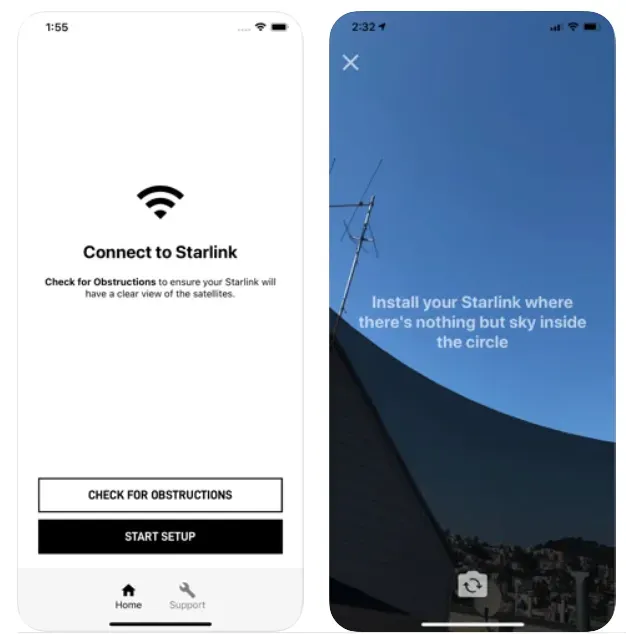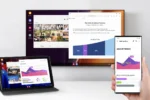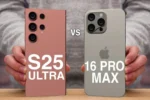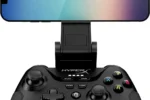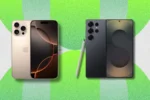The recent release of iOS 18.3 has sparked a flurry of discussions, particularly around its integration with Starlink, the satellite internet service founded by Elon Musk. This update notably introduces a beta program for T-Mobile customers, allowing them to experience satellite connectivity directly on their iPhones, a feature that has piqued the interest of many tech enthusiasts. As users navigate the new iPhone satellite features, some have expressed concerns about whether Starlink is being involuntarily installed on all devices. However, it’s important to clarify that participation in this T-Mobile connectivity option is entirely voluntary and exclusive to eligible subscribers. With the buzz surrounding Elon Musk and Apple’s collaboration, the iOS 18.3 update serves as a pivotal moment in the ongoing evolution of mobile connectivity.
The launch of the latest iPhone software update, iOS 18.3, coincides with the intriguing developments surrounding Starlink, the innovative satellite internet service spearheaded by Elon Musk. This update has unveiled a new opportunity for T-Mobile users to engage in a testing program, granting access to satellite-based communication capabilities on their mobile devices. With the integration of advanced satellite features into the iPhone ecosystem, many are speculating about the implications of this partnership between T-Mobile and SpaceX. Amid the rumors and conspiracy theories, it is essential to understand that the update’s rollout does not enforce Starlink’s installation on every iPhone, but rather offers it as an optional feature for those who choose to participate in the beta. As the landscape of mobile connectivity continues to evolve with these advancements, the iOS 18.3 update marks a significant step forward in enhancing user experience and accessibility.
Understanding the iOS 18.3 Update: Clarifying Starlink’s Role
The recent release of iOS 18.3 has stirred quite a buzz among iPhone users, particularly concerning its unexpected link to Starlink satellite connectivity. While many are speculating about the potential for forced installations of Starlink on all iPhones, the reality is much simpler. The update primarily facilitates T-Mobile customers’ access to a beta program that allows them to utilize Starlink’s satellite messaging capabilities in areas where traditional cellular signals may falter. This means that only those who opt into the beta program will experience any changes related to Starlink, effectively dispelling myths about involuntary installations for all iPhone users.
Moreover, it’s crucial to understand how this integration fits into the broader context of Apple’s technology advancements. The iOS 18.3 update continues Apple’s trend of enhancing connectivity options for users, particularly as the demand for reliable communication methods grows in remote areas. By collaborating with T-Mobile and SpaceX, Apple is not only providing a new layer of connectivity but also pushing the boundaries of how satellite technology can be utilized in everyday devices. This partnership aims to bring innovative solutions to users without compromising their choice or privacy.
The Conspiracy Theories Surrounding Starlink and iOS 18.3
In the digital age, misinformation spreads rapidly, often leading to unwarranted fears among consumers. The conspiracy theories surrounding the iOS 18.3 update and its supposed connection to Starlink are a prime example of how rumors can mislead the public. Users on platforms like TikTok have suggested that the update installs Starlink on every iPhone, invoking memories of Apple’s controversial U2 album release that was automatically downloaded onto devices. These theories, while intriguing, lack substantial evidence and overlook the clear opt-in nature of T-Mobile’s Starlink beta program.
Understanding these conspiracy theories requires a deeper look into consumer behavior and digital paranoia. With high-profile figures like Elon Musk involved in transformative technologies, people are naturally cautious about how these innovations affect their privacy and device functionality. However, as clarified by Apple and T-Mobile, the iOS 18.3 update does not covertly install Starlink features but rather enhances the options available to T-Mobile customers willing to participate in the beta testing phase. This distinction is vital in alleviating fears and promoting informed discussions about technological advancements.
How T-Mobile and Starlink Are Changing Connectivity
The partnership between T-Mobile and Starlink marks a significant milestone in the telecommunications industry, promising to revolutionize connectivity in areas previously deemed unreachable. Through the ‘Coverage Above and Beyond’ initiative, T-Mobile subscribers can access satellite messaging capabilities that complement traditional cellular networks. This innovative approach not only ensures that users can communicate during emergencies but also highlights the evolving landscape of mobile connectivity. With the launch of this beta program, T-Mobile is taking a proactive step toward integrating satellite technology into everyday communication.
Furthermore, this collaboration is set against the backdrop of increasing consumer reliance on mobile devices for communication. As users demand more robust services, T-Mobile’s integration of Starlink showcases a forward-thinking strategy aimed at providing seamless connectivity. With over 330 satellites already launched, the potential for expanded services, including voice support by 2025, positions T-Mobile and Starlink at the forefront of the next-generation communication revolution. This partnership not only enhances service offerings but also sets a precedent for future collaborations in the tech industry.
The Functionality of iOS 18.3: What You Need to Know
With the introduction of iOS 18.3, Apple has made strides in improving user connectivity options, particularly for T-Mobile customers. The update enables iPhone 14 and newer models to connect to the T-Mobile Starlink beta, offering a unique feature that allows users to send messages when traditional cellular networks are unavailable. Importantly, this feature is entirely optional, and users who do not wish to participate can easily disable satellite connectivity through their device settings. This flexibility emphasizes Apple’s commitment to user choice amidst concerns of forced updates.
Moreover, the iOS 18.3 update serves as a critical step in Apple’s ongoing efforts to enhance mobile communication capabilities. The inclusion of Starlink connectivity reflects a broader trend within the tech industry towards integrating satellite technology into consumer devices. As more users become aware of these advancements, it opens the door to discussions about the future of mobile connectivity, the potential for improved services, and the importance of consumer consent in technology upgrades. Apple’s transparent approach to feature deployment in iOS 18.3 sets a positive example for future updates.
Exploring the Beta Program: Who Can Join?
The T-Mobile Starlink beta program is currently accessible to a select group of users, specifically those who are T-Mobile subscribers with compatible devices. This initiative allows early adopters to experience Starlink’s satellite messaging capabilities while providing valuable feedback to improve the service. As part of the beta testing process, participants can expect to encounter unique challenges and advantages as they explore the capabilities of satellite connectivity. This early engagement is crucial for T-Mobile and SpaceX to refine the service before its official rollout.
Additionally, the beta program highlights the importance of user participation in technology development. T-Mobile’s efforts to incorporate feedback from its customers demonstrate a commitment to delivering a product that meets user needs. As the program progresses, there are expectations that the list of compatible devices will expand, allowing more users to benefit from this innovative service. By actively involving customers in the development process, T-Mobile is fostering a community of engaged users who can shape the future of satellite communication.
The Future of Satellite Connectivity: What Lies Ahead?
As we look ahead, the future of satellite connectivity appears promising, particularly with the advancements being made by T-Mobile and Starlink. The ongoing deployment of Starlink satellites and the integration of these technologies into mobile networks signify a transformative shift in how we approach communication in remote areas. With plans for expanded services and capabilities, including voice support expected by 2025, the landscape of connectivity is set to evolve dramatically. This innovation will likely lead to increased competition among telecommunications providers, driving further advancements in technology.
Moreover, the potential for satellite connectivity to enhance emergency communications cannot be overstated. As natural disasters and other emergencies can disrupt traditional network infrastructure, the ability to send messages via satellite can be a lifesaver. T-Mobile’s partnership with Starlink exemplifies how companies can collaborate to create solutions that directly address consumer needs. Looking forward, we can anticipate a future where satellite technology becomes an integral part of our everyday communication, enhancing reliability and accessibility for users everywhere.
Debunking Myths: The Truth About Starlink and Apple
Amidst the swirling conspiracy theories about Starlink’s role in the iOS 18.3 update, it is crucial to debunk the myths that have emerged. The notion that Starlink features are being involuntarily installed on all iPhones is fundamentally incorrect. In reality, the update only allows T-Mobile subscribers to opt into a beta program for satellite messaging. This misunderstanding stems from a broader fear of technology overreach, compounded by past incidents where companies have pushed unwanted features onto users. However, Apple has made it clear that participation in this beta is entirely voluntary.
Additionally, the collaboration between Apple, T-Mobile, and Starlink represents a carefully orchestrated effort to enhance connectivity without compromising user autonomy. Users can choose whether to engage with the satellite features, and those uninterested can easily disable them. This transparent approach contrasts sharply with the fears fueled by misinformation, highlighting the importance of understanding the technology we use. By educating consumers on the actual functionality of updates like iOS 18.3, we can foster a more informed dialogue about the role of satellite connectivity in modern mobile communication.
Comparing Satellite Services: T-Mobile vs. AT&T and Verizon
As the satellite connectivity landscape continues to evolve, it’s essential to compare the different offerings from major telecommunications providers like T-Mobile, AT&T, and Verizon. T-Mobile’s partnership with Starlink is unique in its focus on providing direct satellite messaging capabilities to users, setting it apart from AT&T and Verizon’s collaborations with other satellite service providers. While AT&T is working with AST SpaceMobile to offer a range of services, including voice and video, Verizon has partnered with Skylo to provide emergency messaging and location sharing. Each provider’s approach reflects their strategic priorities in enhancing connectivity for their customers.
Moreover, the competition among these companies is likely to accelerate the development of satellite technology and its integration into mobile networks. As they each strive to offer comprehensive services, consumers can expect improvements in speed, reliability, and coverage. T-Mobile’s focus on immediate satellite messaging capabilities caters to urgent communication needs, while AT&T and Verizon are exploring broader service possibilities. Ultimately, this competition will benefit consumers, providing them with more choices and better services as satellite technology becomes a standard component of mobile communication.
User Experience with T-Mobile Starlink: What to Expect
For T-Mobile customers participating in the Starlink beta program, the experience promises to be both exciting and innovative. Users can expect to engage with satellite messaging capabilities that allow for communication even in areas where cellular signals are weak or nonexistent. This functionality is especially valuable for those who frequently travel to remote locations or need reliable communication during emergencies. As T-Mobile continues to refine this service, participants will play a crucial role in providing feedback that shapes the final product.
Furthermore, the user experience is designed to be seamless, allowing participants to easily send and receive messages without needing to navigate complex settings. T-Mobile has emphasized the importance of accessibility in their approach, ensuring that users can easily opt-in or opt-out of satellite features as they choose. This user-centric design philosophy will likely enhance customer satisfaction and foster a sense of community among beta testers, who can share their experiences and insights about the functionality of the new service.
Frequently Asked Questions
What is the significance of the iOS 18.3 update for Starlink users?
The iOS 18.3 update introduces the ability for T-Mobile customers to access Starlink’s satellite messaging service as part of a beta program. This allows users to send messages even when traditional cellular services are unavailable, utilizing Starlink’s satellite network.
Are all iPhone users affected by the Starlink feature in iOS 18.3?
No, the Starlink feature included in iOS 18.3 specifically requires a T-Mobile subscription. Only T-Mobile customers with iPhone 14 or newer models can access this beta service, and users on other networks are not impacted.
How does the partnership between T-Mobile and Starlink work with iOS 18.3?
T-Mobile and Starlink’s partnership, announced in 2022, enables T-Mobile customers to connect to Starlink satellites for messaging services. The iOS 18.3 update facilitates this connectivity, letting users enroll in the beta program for enhanced messaging capabilities.
Will iOS 18.3 automatically install Starlink on my iPhone?
No, the iOS 18.3 update does not automatically install Starlink on all iPhones. It only enables T-Mobile customers to voluntarily participate in the Starlink beta program if they choose to.
What should I do if I want to disable the Starlink feature on my iPhone after the iOS 18.3 update?
To disable the Starlink feature on your iPhone after updating to iOS 18.3, go to the Settings app, tap on Cellular, select your carrier, and then tap on Satellite to turn off the feature.
What are the limitations of the Starlink beta program for T-Mobile customers?
The Starlink beta program is currently only available for T-Mobile customers with compatible devices, specifically iPhone 14 or newer models, as well as select Samsung Galaxy and Pixel devices. The service is free during the beta phase, but future commercial details, including potential costs, are still unclear.
Does the iOS 18.3 update allow for voice calls through Starlink?
Currently, the iOS 18.3 update and the associated Starlink beta program only support SMS messaging. Voice calls over Starlink are expected to be available in future updates, but they are not included in the current beta.
What other carriers are working on satellite services similar to Starlink and T-Mobile?
AT&T and Verizon are also developing satellite services through partnerships with AST SpaceMobile and Skylo, respectively. These services aim to provide text, voice, and data capabilities, but they are separate from the T-Mobile and Starlink collaboration.
Is there a cost associated with using Starlink services through T-Mobile after the beta?
While the Starlink beta program is currently free for T-Mobile customers, it is expected that T-Mobile will introduce charges once the service goes commercial. Details on pricing and data caps have not yet been announced.
What satellite features are available to iPhone users with iOS 18.3?
With iOS 18.3, iPhone users who are T-Mobile customers can access satellite messaging via the Starlink beta. This feature allows for communication even when cellular networks are unavailable, but it requires compatible devices.
| Feature/Aspect | Details |
|---|---|
| iOS 18.3 Release | Released late last month, causing confusion about Starlink. |
| Starlink Connectivity | Introduces beta access for T-Mobile customers to Starlink services. |
| Partnership Background | T-Mobile and SpaceX partnership announced in 2022 for satellite connectivity. |
| User Eligibility | Only T-Mobile customers can access the Starlink beta program. |
| Disabling Features | Users can disable satellite connectivity via iPhone settings. |
| Future of the Service | Commercial availability and pricing details remain unclear. |
Summary
The recent updates regarding iOS 18.3 and Starlink shed light on a misunderstood partnership between T-Mobile and SpaceX, addressing concerns over involuntary installations. While iOS 18.3 introduces a beta program for T-Mobile users to access Starlink’s satellite connectivity, it does not force Starlink onto all iPhone users. The update is designed to enhance connectivity for those in remote areas, but it is crucial for users to understand that they can opt out if they choose. As the service evolves, more information about commercial availability and potential costs will be essential for consumers.

